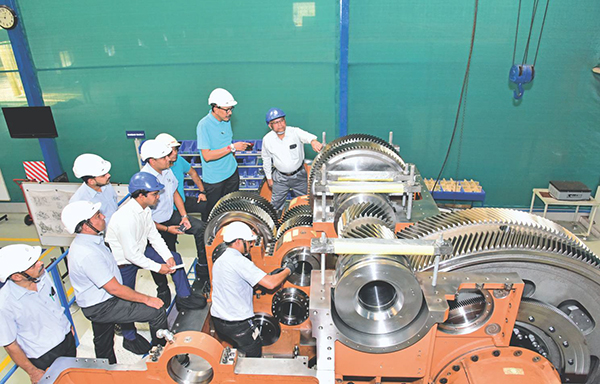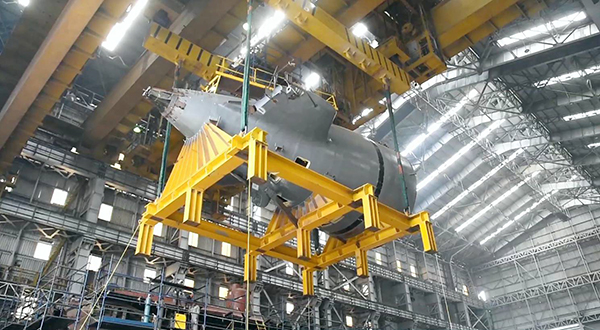In a big push for ‘Make in India’ for the defence sector, Finance Minister Nirmala Sitharaman announced, on 16 May, a slew of measures to improve defence procurement and production. Sitharaman said that the idea was to bring down India’s large weapons import bill and while certain high technology systems would still be procured from abroad, emphasis would be on procuring locally made products.
• Foreign Direct Investment cap will be raised from 49% to 74% under automatic route to attract Foreign original equipment manufacturers (FOEMs) to set up shop in India.
• A negative list for import of defence equipment will be made and increased every year as indigenous capability increases. Draft DPP 2020 has introduced a new category called “Make-III” which shall support the indigenous production of imported spares.
• Capital budget will be provided for separate in the defence budget for indigenously developed products, as opposed to procurement from the global market in consultation with the Department of Military Affairs (DMA).
• The Ordnance Factory Board (OFB) and its factories will be corporatised to improve the autonomy, accountability and efficiency of ordnance supplies.
• The procurement process will be speeded up with time-bound procurement. A Project Management Unit (PMU) will be set up to support contract management. GSQRs will be drawn up realistically and honoured but the notified list of items can only be purchased from India.
Foreign Direct Investment
While raising the FDI limit in the defence sector under the automatic route from 49% to 74%, Sitharaman also said that the import of some weapons and platforms will not be allowed. “We shall notify a list of weapons and platforms which will not be allowed or imports. Every year this list will be increased, as we build capacities,” she said.
“Make in India and self-reliance have become a partner, particularly when you are talking about industries like defence. Armed forces require the best of equipment and the latest technology, so some of the latest weaponry will continue to be imported. But some equipment are being made in India and can be bought by the armed forces,” she said. Certain items banned for imports can only be purchased from within the country.
Raising FDI was an old pending demand of FOEMs as it would help them in protecting IP in high tech areas. However, even now 100% FDI is permitted through the approval route. No major OEM has come forward to utilise it. Defence manufacturing is unlikely to get any boost due to this single factor. FOEMs will set shop here only when they see bright prospects of purchase orders matching their investment.
India attracted only a measly $ 8.8 million (Rs 66 crore) in FDI in the defence manufacturing sector in the past 19 years –from April 2000 to end of 2019. The figures were tabled in Lok Sabha on 4 March 2020.
Sitharaman was hopeful that the change could encourage global companies like Boeing, Lockheed Martin, Airbus, Saab, to invest in India. This will also be a boon for warship making industry, UAVs, Artificial intelligence, helicopters, military vehicles, aerospace ventures making sub-assemblies and part of aviation systems.
Negative List
On imports, the minister said that while essential weapons not produced here will be sourced from abroad, a negative list will be generated and notified for which all imports will be banned. This list will be generated by the Department of Military Affairs and will have year wise timelines to reduce import dependency.


The government said that it would also move towards indigenisation of spare parts for foreign systems that are already in service. Indian industry will be encouraged to produce spare parts locally for the consumption of the armed forces.
The Vice Chief of Indian Army, Lt Gen SK Saini, said the proposed ‘import ban’ list of military hardware will not restrict the forces to procure niche technologies from abroad. He said 80 per cent of the Army’s capability development and more than 92 per cent of its sustenance budget was based on indigenous products and services.
Separate Budget for Indigenous Products
The government will make separate budgetary provisions for procuring only Indian made defence items to boost the economy in the post Covid 19 world. According to estimates, the Indian armed forces are projected to spend around $130 billion in capital procurement in the next five years.
The existing categorisation process is supposed to ensure that any item that can be made in India should not be imported. But our defence manufacturing sector, dominated by defence public sector undertakings (DPSUs), has very limited capability in certain areas. As long as we remain totally dependent on DPSUs, there is hardly any hope for import substitution of more complex equipment.
On 20 May, the defence ministry issued directives providing for procurement of 26 spares and equipment for military use only from domestic suppliers in sync with the government’s focus on encouraging indigenous defence manufacturing.
All the items identified for procurement from domestic defence manufacturers are used in shipbuilding. So far, the defence ministry has notified 127 items where purchase preference is given to local suppliers who meet the minimum local content (MLC) as prescribed for each item. The local content prescribed for the 26 items is in the range of 40 per cent to 60 per cent.
Procurement Process
The government’s intention is to speed up the procurement process by bringing in mechanisms to make realistic General Staff Qualitative Requirements (GSQRs). Besides the overhauling of testing and trial procedures, the defence ministry will also set up a Project Monitoring Unit to support contract management.
Every revision of DPP has been done with this issue as its prime objective. A Project Management Unit (PMU) will be set up to support contract management, besides the realistic setting of General Staff Qualitative Requirements (GSQRs) of weapons/platforms. GSQR’s are the parameters for choosing a weapon or platform. All major projects already have Project Management Teams. Only the name is being changed to Project Management Unit.
How is the criteria of a GSQR to be judged as realistic? Even now all GSQRs are expected to be realistic and there is a well-defined process to ensure that. There is some scope of simplifying trial and testing process, particularly for the land systems. The main requirement in this area is to improve processing efficiency of Procurement Wing of MoD.
The NCNC trials and the requirement of operational efficiencies in different terrains and weather conditions need to be expedited.
Corporatisation of Ordnance Factories
The minister said that the long pending corporatisation of the Ordnance Factory Board (OFB) has been approved that will enable them to cut costs and overheads for more efficient operations. She also said that the OFB factories could be listed in the markets in the near future to bring in transparency in their operations. The corporatisation of OFBs has long being contested by staffers but the defence ministry has gone ahead with the process, with a detailed roadmap for implementation ready. Sitharaman emphasised that this does not mean a privatisation of the factories but is being done to improve performance. Privatisation is a better option.
Summary of Reforms in Defence Procurement
Foreign Direct Investment Cap
• Will be raised from 49% to 74% under automatic route
Negative list for import of defence equipment
• Will be increased every year as indigenous capability increases; new products will be added to this list.
• Priority to be given to indigenised production of imported spares
• Draft DPP 2020 has introduced a new category called “Make-III” which shall support the indigenous production of imported spares.
Capital Budget
• Provision of a separate defence budget for capital procurement of indigenously developed products, as opposed to procurement from the global market in consultation with the Department of Military Affairs.
• According to Air Chief Marshal RKS Bhadauria, IAF is looking to procure 450 aircrafts in the next 35 years and now is the perfect time for industries to respond and come up with solutions which are rapidly put in place. Indian industry should come up to the challenge of delivering these aircraft.
Ordnance Factory Board (OFB)
• Corporatisation of OFB would improve the autonomy, accountability and efficiency of ordnance supplies
• This has been in discussion for some time and is a clear indication of the government’s definite intent to increase output efficiency from Ofs.
Procurement Process
• Setting up a Project Management Unit (PMU) for time bound procurement and support for contract management purposes
• GSQRs would be drawn up realistically and honoured but the notified list of items can only be purchased from India












